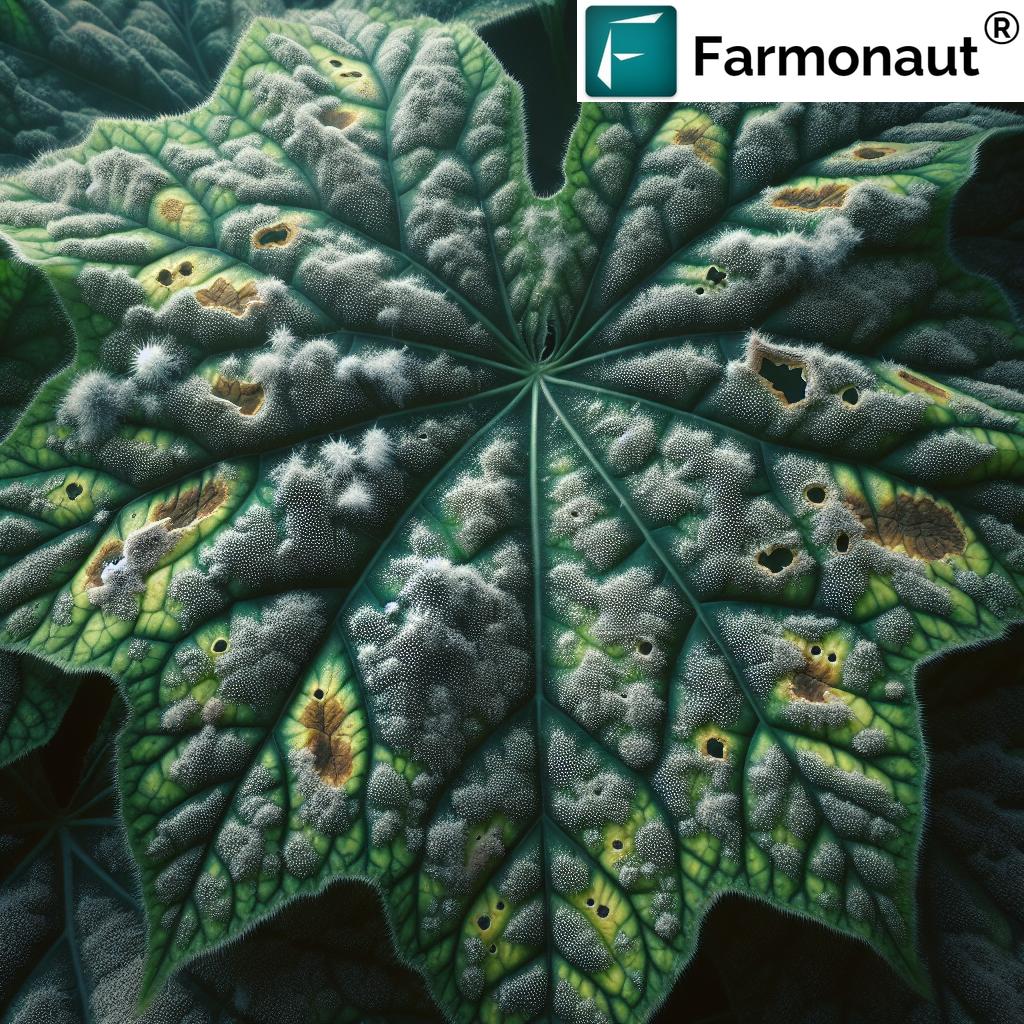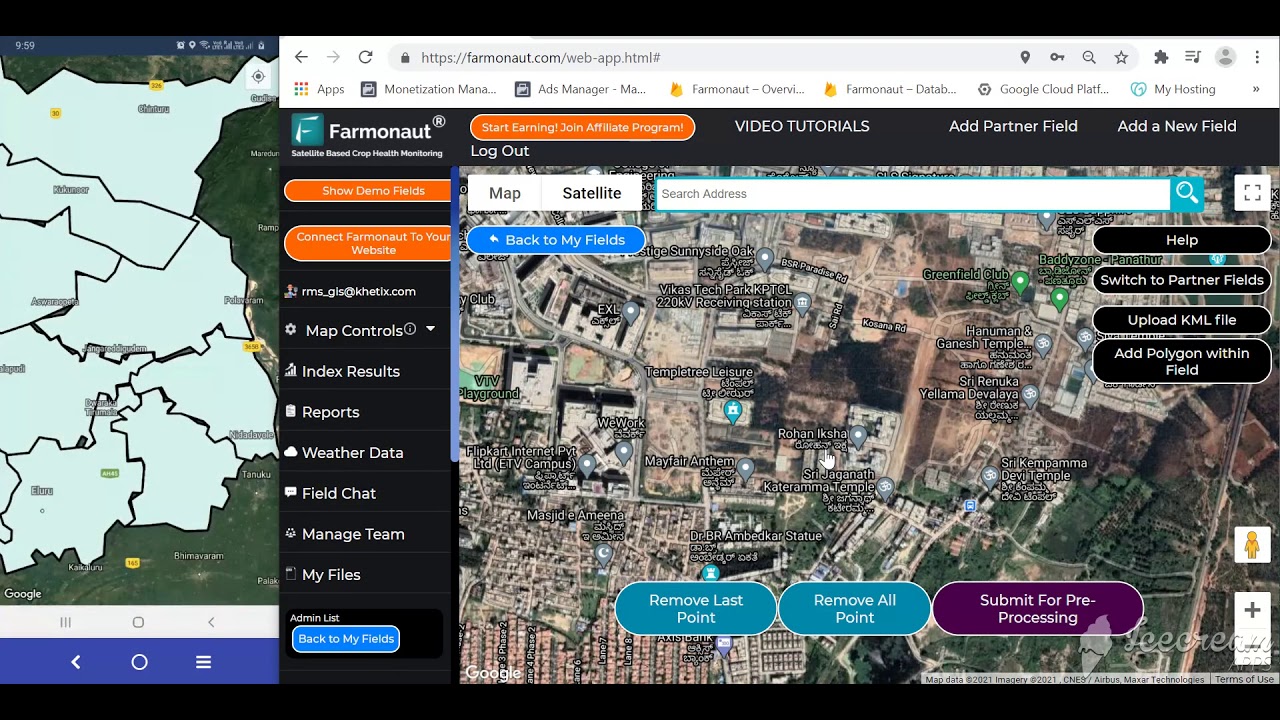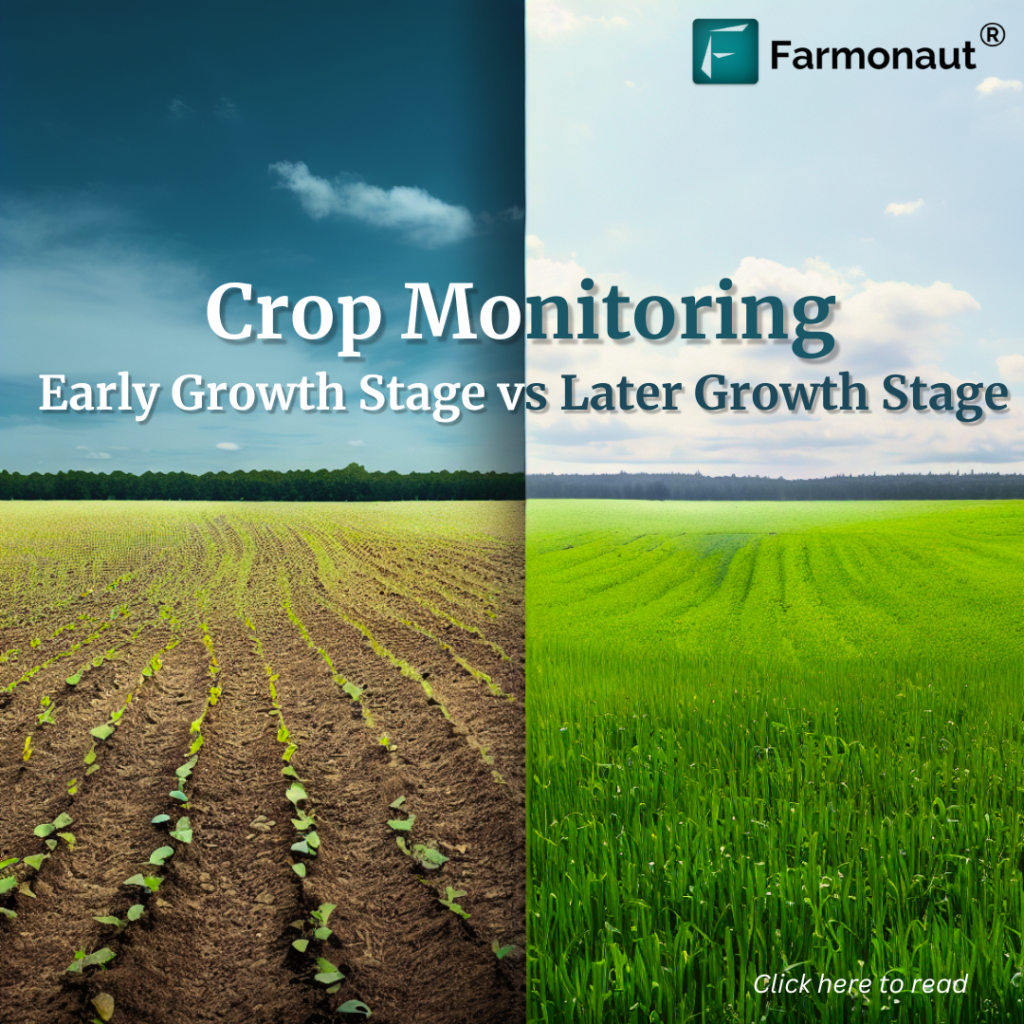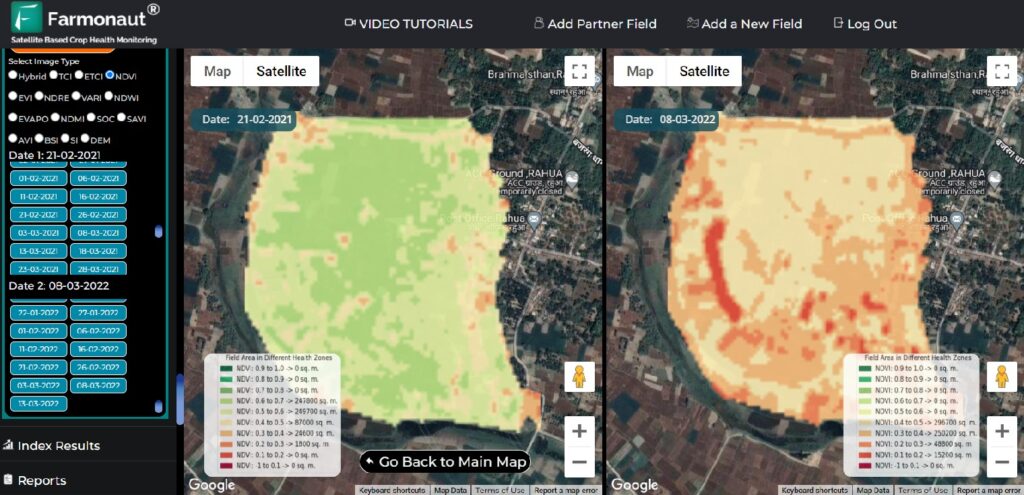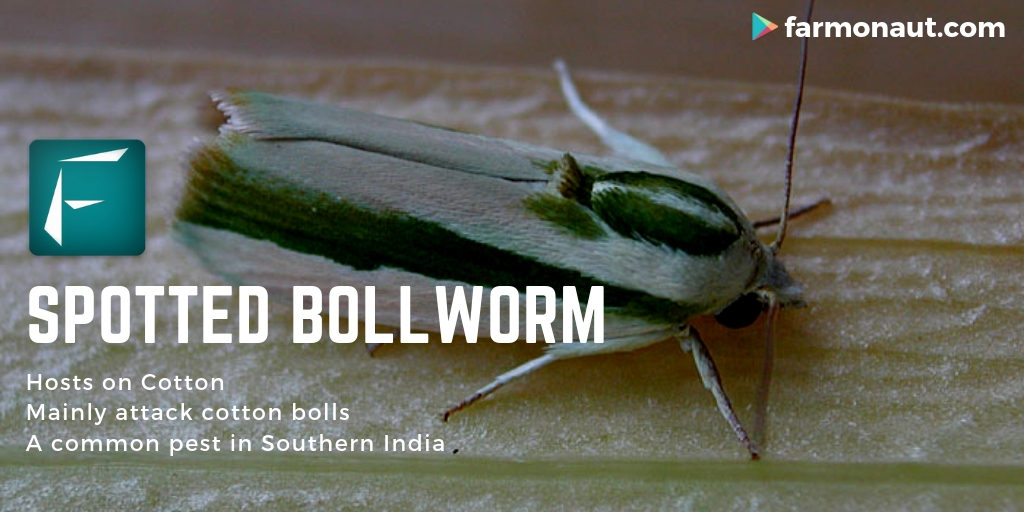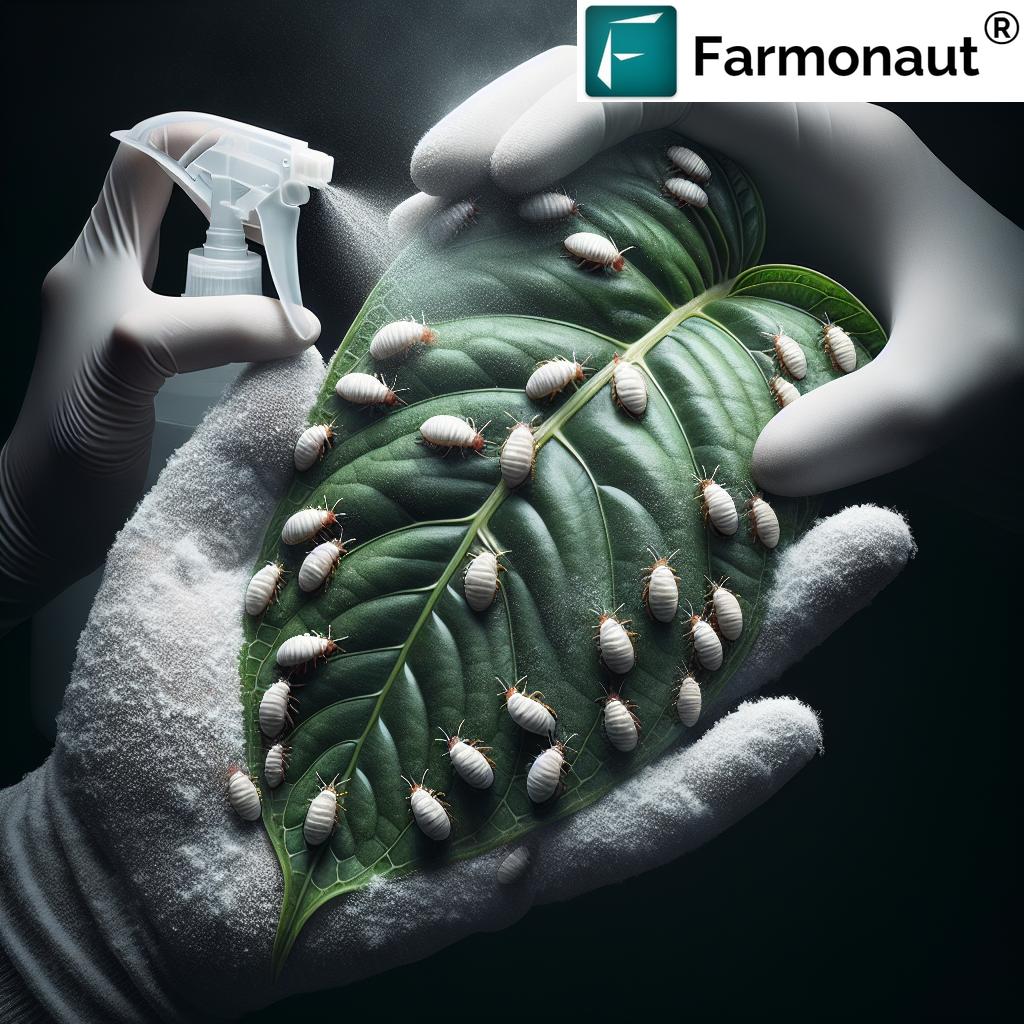Signs and Symptoms of Downy Mildew on Plants: 7 Expert Tips
“Over 80% of downy mildew cases start with yellow leaf spots before progressing to brown lesions.”
Table of Contents
- What Is Downy Mildew?
- Signs and Symptoms of Downy Mildew Infection
- Symptoms, Effects, and Management Actions Table
- Environmental Conditions Favoring Downy Mildew
- 7 Expert Tips for Downy Mildew Management
- Cultural Practices for Plant Disease Control
- Chemical Controls: Fungicides for Downy Mildew
- Downy Mildew Resistant Plant Varieties
- Farmonaut’s Satellite Solutions for Monitoring Downy Mildew
- FAQ on Downy Mildew
- Conclusion
Downy mildew is one of the most destructive plant diseases, affecting the foliage of a wide range of crops including cane berries, roses, herbaceous ornamentals, fruit, grain, and vegetable crops. Recognizing early downy mildew symptoms on leaves and understanding the environmental conditions favoring downy mildew infection are essential for effective management and safeguarding yields.
In this comprehensive guide, we’ll decode the signs and symptoms of downy mildew, walk you through proven cultural practices for plant disease control, and highlight 7 expert tips on how to control downy mildew. We’ll also explore innovative technologies—like satellite-based disease monitoring provided by Farmonaut—that empower farmers to get ahead of disease outbreaks.
Let’s take an in-depth look at the causes, identification, and management strategies for downy mildew, so you can keep your plants healthy, your crops productive, and your farm sustainable.
What Is Downy Mildew?
Downy mildew isn’t a single pathogen, but a group of devastating plant diseases caused by various species of water molds, or oomycetes. The most prominent species responsible for downy mildew include Peronospora, Plasmopara, and Bremia. Unlike common fungi, these pathogens thrive in cool, humid, and wet conditions, rapidly infecting the leaves and foliage of their host plants.
Once introduced, downy mildew can spread quickly, especially during periods with high humidity and moderate temperatures (40°–70°F / 4°–21°C). The disease can cause widespread defoliation, premature leaf drop, and substantial reductions in crop yields.
- Scientific Families: Oomycetes (water molds): Peronospora, Plasmopara, Bremia
- Main Crops Affected: Cucurbits (cucumbers, melons, pumpkins, squash, watermelons), cane berries, roses, ornamentals, fruit, grain, and vegetable crops
Signs and Symptoms of Downy Mildew Infection
Accurate identification of downy mildew symptoms is the first line of defense. The disease follows a characteristic pattern—starting subtle and becoming increasingly destructive if unchecked.
Primary Signs & Symptoms:
-
Initial Indication:
- Pale green or yellow spots (focus keyword: yellow spots) appear on the upper leaf surface. These are often the first signs and follow the pattern of the leaf’s veins.
-
Progression:
- Spots become angular lesions with distinct edges, often bounded by leaf veins.
- The lesions progress and darken—to purplish-red or deep brown and necrotic.
- Infected leaves may drop prematurely.
-
Underside of Leaves:
- Especially in moist conditions, a fluffy mass of brown, gray, or purplish spores appears on the underside of leaves. These spores are short-lived and may not always be visible.
-
Plant-Specific Characteristics:
- Cucurbits: Disease usually infects older leaves near the plant center.
- Rapid spread in suitable conditions, causing extensive defoliation and yield loss.
“Using resistant plant varieties can reduce downy mildew incidence by up to 60% in affected crops.”
Other Visual Indicators to Watch For:
- Irregular angular spots aligned with veins (strong indicator of downy mildew)
- Necrotic leaf tissue—dark, dead patches that eventually dry and fall out
- Whole leaves or sections curling or wilting, especially under cool and humid conditions
- Leaf drop and defoliation in severe cases
Symptoms, Effects, and Management Actions: Downy Mildew at a Glance
The following table summarizes the typical signs of downy mildew, their prevalence, probable effects on plant health, visual cues, and proven management actions. Use it as a diagnostic and action checklist.
| Symptom/Sign | Estimated Prevalence | Possible Effects on Plant Health | Visual Indicators | Recommended Action |
|---|---|---|---|---|
| Pale green/yellow angular spots on upper leaf surface | ~80% | Early infection, photosynthesis reduction | Angular, vein-bound spots; pale to yellow color | Monitor closely; remove initial infected leaves if possible |
| Fluffy brown/gray/purplish spore mass on underside | ~65% | Spore spread, rapid disease expansion | Fluffy or “downy” looking mass in moist weather | Prompt lysing and removal of infected foliage; improve air flow |
| Angular lesions turn brown/necrotic | ~90% | Necrosis, tissue death, potential yield loss | Dark or brown patches, sometimes reddish margin | Remove and destroy infected leaves; start fungicide if needed |
| Premature leaf drop and defoliation | ~70% | Drastic yield reduction, weakened plants | Bare stems, rapid leaf loss, exposed plants | Sanitize debris; apply protective fungicides |
| Older leaves near plant center infected first (cucurbits) | ~60% in cucurbits | Central infection, defoliation moves outward | Center leaves show early symptoms | Scout for central symptoms; act early in cucurbit crops |
| Rapid spread under cool, high humidity | 100% if not managed | Widespread epidemic, significant loss | Rapid development in clusters, especially after wet spells | Implement air circulation, sanitation, and weather-based forecasting |
| Presence of brown, necrotic tissue patches | ~80% | Tissue death, entry for other pathogens | Irregular dry, brown patches | Remove leaves, apply fungicides, prevent further infection |
Environmental Conditions Favoring Downy Mildew
The environmental conditions favoring downy mildew outbreaks are well defined; understanding them is crucial for effective management.
- High Relative Humidity: ≥ 90% is extremely conducive for water mold spore production and infection.
- Cool, Moderate Temperatures: The disease thrives between 40°–70°F (4°–21°C).
- Wet Leaf Surfaces: Downy mildew spores require wet foliage for at least 8–12 hours to germinate and infect plant tissues.
- Airborne and Water Dispersal: Spores travel long distances on wind currents or splash in water, increasing their reach during wet, rainy, or foggy periods.
These environmental cues allow for predictive management: monitor local weather, closely check at-risk crops after rain or fog, and use digital crop health monitoring tools like Farmonaut for early warning.
7 Expert Tips to Identify & Manage Downy Mildew on Plants
-
Regular Monitoring & Early Detection:
- Scout plants frequently for yellow spots, brown lesions, and visible spores—especially after cool, moist weather.
- Use digital monitoring tools such as Farmonaut’s crop health monitoring platform for real-time, multispectral satellite observation of large fields.
-
Understand Environmental Conditions Favoring Downy Mildew:
- Increase vigilance during prolonged periods of high humidity, cool nights, heavy dew, fog, or rain.
-
Improve Air Circulation:
- Space plants according to crop recommendations and prune dense canopies to enhance airflow between and within plants, reducing humidity around leaves and foliage.
-
Adopt Efficient Watering Techniques:
- Switch to drip or micro-sprinkler irrigation—avoid overhead watering that wets foliage.
- Water early in the day, allowing leaves to dry before evening dew sets in.
-
Sanitation & Crop Hygiene:
- Remove and immediately destroy infected plant debris—this limits pathogen inoculum and future spore sources.
- Practice rigorous cleanliness in and around the fields where mildew was previously detected.
-
Select Downy Mildew Resistant Plant Varieties Where Available:
- Consult with local extension or suppliers on resistant varieties for your crop (especially in cucurbits and grapes).
- Rotate varieties and monitor for signs of evolving pathotypes.
-
Apply Fungicides for Downy Mildew—As Needed, and Preemptively:
- Begin fungicide applications before symptoms develop during high-risk periods.
- Rotate between chemical controls with different modes of action to prevent resistance buildup.
- See detailed guidance below.
Cultural Practices for Plant Disease Control
Cultural practices form the backbone of downy mildew management in any agricultural setting. Here’s how to integrate these time-tested, sustainable methods:
-
Promote Good Air Circulation
- Provide adequate spacing between plants.
- Prune dense canopies and remove excess foliage that prevent air movement.
- Orient rows according to prevailing wind patterns for cross-ventilation.
-
Refine Watering Techniques
- Switch from overhead irrigation to drip systems (reduces leaf wetness time).
- Water plants in early morning hours so that leaves dry before night.
-
Sanitation & Crop Hygiene
- Swiftly remove and destroy infected leaves, stems, and debris.
- After harvest or severe infection, consider removing plant residues from the field.
- Disinfect tools and equipment used in gardening or farming.
-
Crop Rotation and Resistant Varieties
- Rotate susceptible crops with unrelated, non-host plants.
- Use resistant plant varieties wherever available.
-
Utilize Technology for Monitoring
- Employ satellite-based crop monitoring platforms, like Farmonaut, to track vegetation health and pre-symptomatic disease stress from space—enabling large-scale, timely interventions for downy mildew management.
Learn how our large scale farm management solutions can support early disease detection, weather tracking, and integrated resource planning—vital for minimizing downy mildew risk.
Chemical Controls: Fungicides for Downy Mildew
When cultural methods alone aren’t sufficient—especially under persistent high humidity or in the presence of severe disease pressure—chemical controls may be warranted.
-
Choose the Right Fungicides for Downy Mildew
- Most fungicides are preventive, not curative: they protect healthy tissue rather than eliminate established infections.
- Some commonly recommended active ingredients for downy mildew (check local guidelines): mancozeb, chlorothalonil, copper-based fungicides, fosetyl-Al, mefenoxam, and others.
- Follow crop-specific fungicide recommendations from local agricultural extension services.
-
Timing Is Everything
- Apply at the first sign of favorable environmental conditions—don’t wait for symptoms to appear.
- Continue applications during high-risk weather, following all label instructions for interval and re-entry times.
-
Rotate Chemical Classes
- Rotate fungicides with different FRAC group numbers or modes of action to prevent resistance buildup.
-
Safety and Regulations
- Always adhere to safety guidelines and maximum residue limits (MRLs) for edible crops.
- Wear appropriate personal protective equipment (PPE) when handling any chemical controls.
-
Integration Is Key
- Combine fungicide use with cultural practices for plant disease control—not as a standalone remedy.
If you’re part of the agribusiness or need to track all crop input compliance, consider integrating blockchain-based product traceability systems to ensure safe, transparent, and traceable farm practices—from orchard to market.
Downy Mildew Resistant Plant Varieties
Selecting downy mildew resistant plant varieties is a cornerstone of long-term downy mildew management. Where available, these varieties offer built-in genetic resistance to common pathogens—including Peronospora in cucumbers, Plasmopara in grapes, and others.
-
Key Benefits:
- Can reduce disease incidence by 60% or more, especially when combined with other controls.
- Often result in fewer fungicide applications, lower input costs, and enhanced sustainability.
- Action Steps:
- Consult with reputable seed suppliers for the latest resistant cultivars suited to your local area and crop type.
- Continue monitoring, as no variety is 100% immune—pathogen populations can evolve.
For those managing large farms or plantations, selecting smart advisory tools can offer AI-based guidance on optimal crop and variety selection—integrating climate, disease risk, and field data.
Farmonaut’s Satellite Solutions for Monitoring Downy Mildew
Downy mildew outbreaks can be highly variable, requiring real-time field-level insights for effective decision making. At Farmonaut, we offer advanced, cost-effective satellite-based farm monitoring solutions accessible via Android, iOS, browser app, and API. Here’s how our platform supports modern growers:
-
Satellite-Based Crop Health Monitoring:
- We use high-resolution multispectral imagery to detect subtle declines in vegetative health before symptoms are visible on the ground—ideal for scouting large fields, plantations, or multiple small plots.
-
AI-Driven Early Warning:
- Our Jeevn AI advisory system analyzes satellite data, weather, and field history to alert users to potential downy mildew risk periods, suggesting preventive action.
-
Resource Optimization:
- Satellite data guides precisely targeted irrigation and input application, so plants get what they need when they need it—preventing excess water on foliage, a downy mildew trigger.
-
Traceability and Compliance:
- Our blockchain solutions track every action, from fungicide use to field hygiene, helping growers exceed quality and safety standards.
Explore our developer API for integrating satellite and weather insights into your existing agribusiness systems: Farmonaut Satellite API with detailed API Developer Docs.
Satellite-based crop monitoring and AI-powered advisories are core to tackling downy mildew before outbreaks spiral—saving crops, resources, and profits.
Frequently Asked Questions (FAQ) on Downy Mildew
Q1: What crops are most vulnerable to downy mildew?
A: Downy mildew affects a wide range of plants including cucurbits (cucumbers, melons, pumpkins, squash, watermelons), cane berries, roses, many fruit, grain, and vegetable crops, as well as various herbaceous ornamentals.
Q2: What are the very first signs of downy mildew infection on plants?
A: The initial signs are pale green to yellow, angular spots on the upper surface of leaves, often following leaf veins.
Q3: Can I cure established downy mildew with fungicides?
A: Most fungicides for downy mildew work preventively. Once significant infection or necrosis appears, the main steps are removing affected tissue, strong sanitation, and applying protectant fungicides to healthy areas and new growth.
Q4: Are home remedies or organic sprays effective?
A: Organic or biological controls may offer some protection, but evidence is limited compared to integrated cultural and chemical controls. Resistant plant varieties and diligent crop hygiene remain most effective.
Q5: How do I prevent downy mildew from recurring each season?
A: Rotate crops, practice thorough sanitation, use resistant varieties, monitor weather, optimize irrigation, and scout fields regularly. Leverage digital monitoring like Farmonaut’s satellite platform for extra assurance.
Q6: How long do downy mildew spores survive?
A: Many water mold spores are short-lived and don’t persist long in dry, hot conditions, but survival on plant debris or in the soil can last weeks. Sanitation is key.
Conclusion: Outsmarting Downy Mildew Through Vigilance and Innovation
Downy mildew remains a serious threat to farmers, gardeners, and commercial growers across diverse climates. The keys to its management are swift recognition of downy mildew symptoms, understanding environmental conditions favoring downy mildew, integrating cultural practices with judicious chemical controls, and seedling selection using downy mildew resistant plant varieties.
Adopting precision monitoring and innovative digital tools is no longer optional—it’s foundational for modern farms. At Farmonaut, we’re committed to making precision agriculture accessible, affordable, and scalable for all. Our satellite platforms enable real-time crop health monitoring, resource optimization, and AI-based risk alerts for every field—large or small.
Combine these best problem-solving practices for downy mildew management with timely, tech-driven insights, and your crops will not only survive, but thrive.
Identify downy mildew early. Take informed action. Use the latest in satellite-based monitoring and AI-powered advisory from Farmonaut—empowering you, your crops, and your business with the tools to outsmart plant disease.


